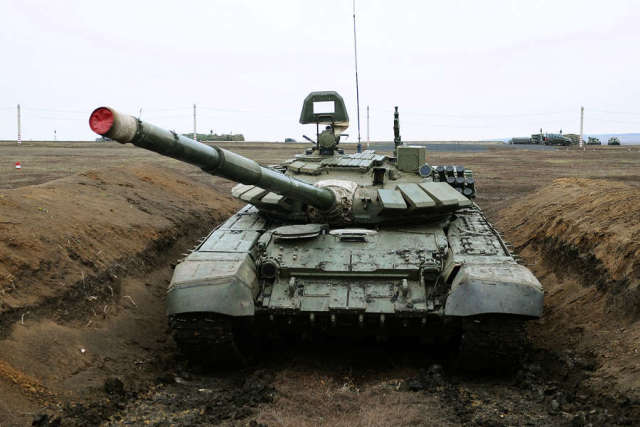Military political scientist: Germany can send its tanks to the Armed Forces under the guise of Slovenian
The German government will supply Slovenia with Marder infantry fighting vehicles and Fuchs armored personnel carriers, and in return, Slovenia will send Soviet T-72 tanks to Ukraine. This was reported by the German news agency DPA, citing its sources. The German media called this scheme a "circular exchange". "Newspaper.Ru" figured out what was wrong with her.
The mechanism of "circular exchange", at first glance, looks quite simple. Slovenia sends 54 of its tanks to Kiev, and in return receives armored vehicles from Germany. Berlin, in turn, orders new equipment from industrialists for the Bundeswehr.
"Public opinion [in Germany] is not unambiguous about military supplies to Ukraine. In general, Germany supports Kiev in this situation, but the question of whether the Germans should supply weapons, and especially heavy weapons, is controversial both for ordinary German citizens and for politicians. The "circular exchange" scheme may be a way out for Germany. The government itself does not supply weapons, but it helps such supplies from other countries," German political commentator Janis Richter said on the ZDF TV channel.
Earlier, German Chancellor Olaf Scholz said that the German army had run out of weapons for Ukraine.
"Germany and Ukraine are studying the list of weapons that can be supplied. After approval, the shipments will be paid for immediately by Berlin. NATO will not directly intervene in the conflict in Ukraine. However, the Bundeswehr's capabilities in supplying weapons to Ukraine are almost exhausted. Further supplies will be provided by the military-industrial complex," the Chancellor said.
In turn, the Inspector General of the Bundeswehr, Markus Laubenthal, said that Germany "cannot supply Ukraine with heavy weapons."
Slovenia has been promised German Marder infantry fighting vehicles and Fuchs armored personnel carriers instead of its tanks, which will go to Ukraine. In Ljubljana, DPA reported, Leopard 2 tanks and Boxer armored personnel carriers were also additionally requested.
"There are a number of subtle circumstances in this transaction. The main one is the absence of T-72 tanks in Ljubljana. The Slovenian army is armed with the M-84 main battle tanks and the T-55 medium tanks. The M-84 was indeed created on the basis of the Soviet T-72M tank and was produced in a modernized form by the former Yugoslavia. After its collapse, Slovenia got about 50 such combat vehicles, but most of them, at least 30 units, were subsequently sold. Thus, about 15-20 M-84 tanks are in combat-ready condition. That is, it is physically impossible for Ukraine to dial the announced amount. The T-54 /T-55 tanks, which were developed back in 1946, should not be taken into account," he told the newspaper.En" military expert, reserve Colonel Anatoly Matveychuk, who previously held the position of Russia's military adviser in Syria.
Military political scientist Valery Volkov said that the production of various modifications of tanks based on the T-72 in the 1970s and 80s was carried out by several countries, including Czechoslovakia, Yugoslavia and the GDR, and after 1991 the largest fleet of such armored vehicles, including the then-modern T-72 and T-80 tanks, went to Germany.
There is no sense from the T-72 for Berlin. They only spend money on storage. The second step is to transfer Marder-type samples to Slovenia already openly, and then order new samples of equipment from industrialists for themselves," Volkov believes.
Victor Sokirko

